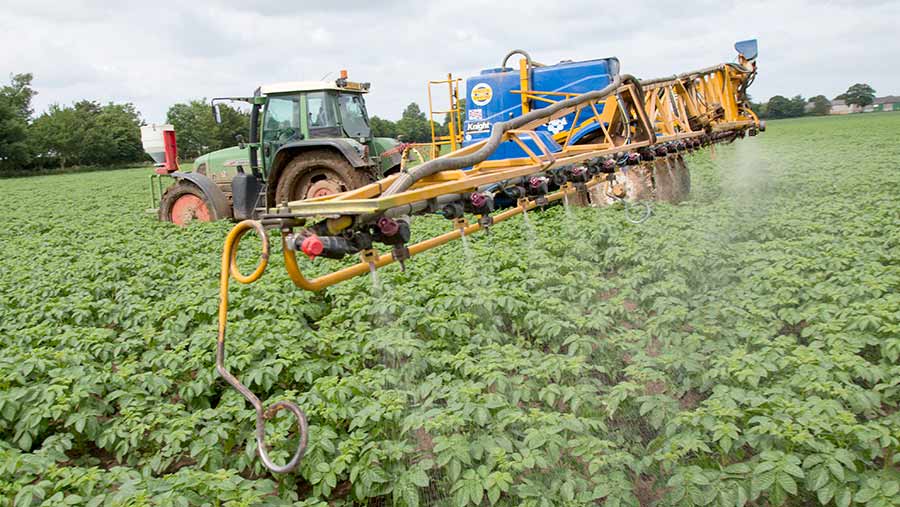Spud Watch: Dry weather reduces blight pressure
 © Gary Naylor
© Gary Naylor Seed planting was completed by the end of the first week in June, with the last of the pre-emergence herbicides being applied, at the time of writing. Weed control has been a real mixed bag this year.
Where applications were timed on the few occasions where ridges were moist, residuals have worked really well, otherwise, weed control has been a real challenge.

John Sarup, Spud Agronomy
This is especially the case where volunteer oilseed rape, black bindweed and fat hen are concerned, with a number of ware crops requiring a post-emergence treatment of rimsulfuron (Titus). Personally, I have had good results when this has been mixed with Ranman Top (cyazofamid).
See also: Four-row planter and rotavator combo speeds up potato planting
Over the past few years I have noticed the efficacy of pre-emergence herbicides is extremely variable, even with the same products applied in the same conditions. I have concluded this is down to application with water rate, forward speed and nozzle type all having a part to play.
I wonder if it is time for industry-funded research to revisit application in the potato crop, to clarify what is best so we get the most out of our pesticide applications.
Dry north
There has been little or no significant rainfall across most of northern England and the Scottish Borders, so where able, irrigation has started in good time, not least to enable the soil to get used to taking up water as opposed to it just running off, which is often the case when it is very dry.
Where irrigation is not available, I am recommending the use of biostimulant-based foliar feeds to keep the plant relatively happy until moisture does finally arrive.
As yet, I have not seen any blight, and with the dry weather, I am not getting too excited. However, I am not complacent, just advocating regular applications of cheaper, non-fluazinam-based, products, with the intent of bringing in the “big guns” if conditions change.
I am also considering if the crop is off the field or intended for storage, in which case I am recommending products that offer activity on tuber blight for those crops destined for storage.
So far, aphid numbers caught in yellow water traps are extremely low compared with the past couple of years. However, I suspect this will be short-lived and we will see numbers rise over the next few weeks.

